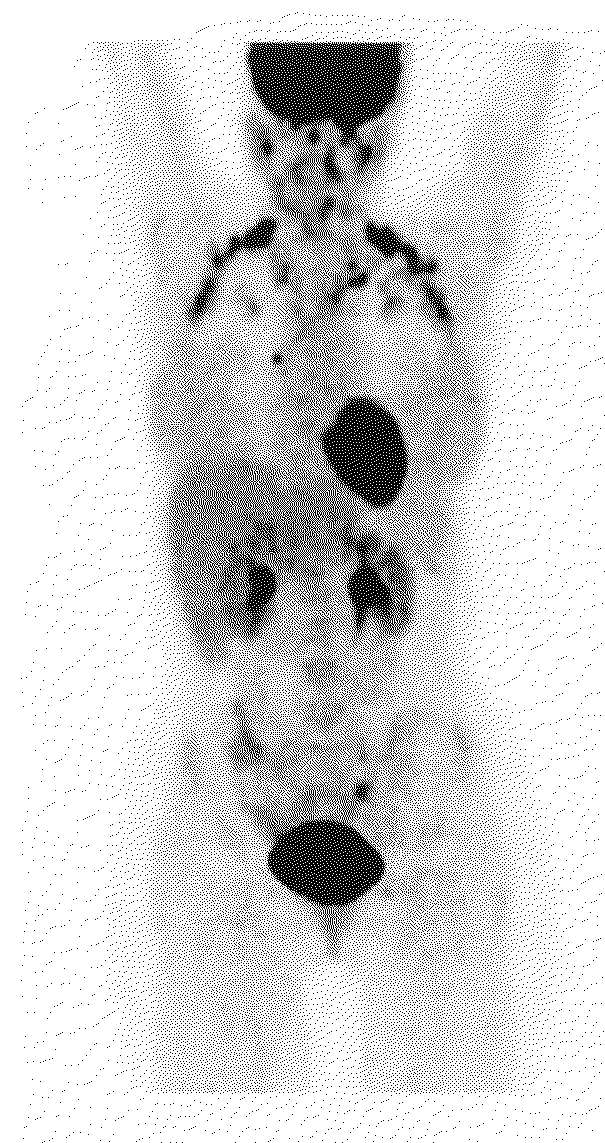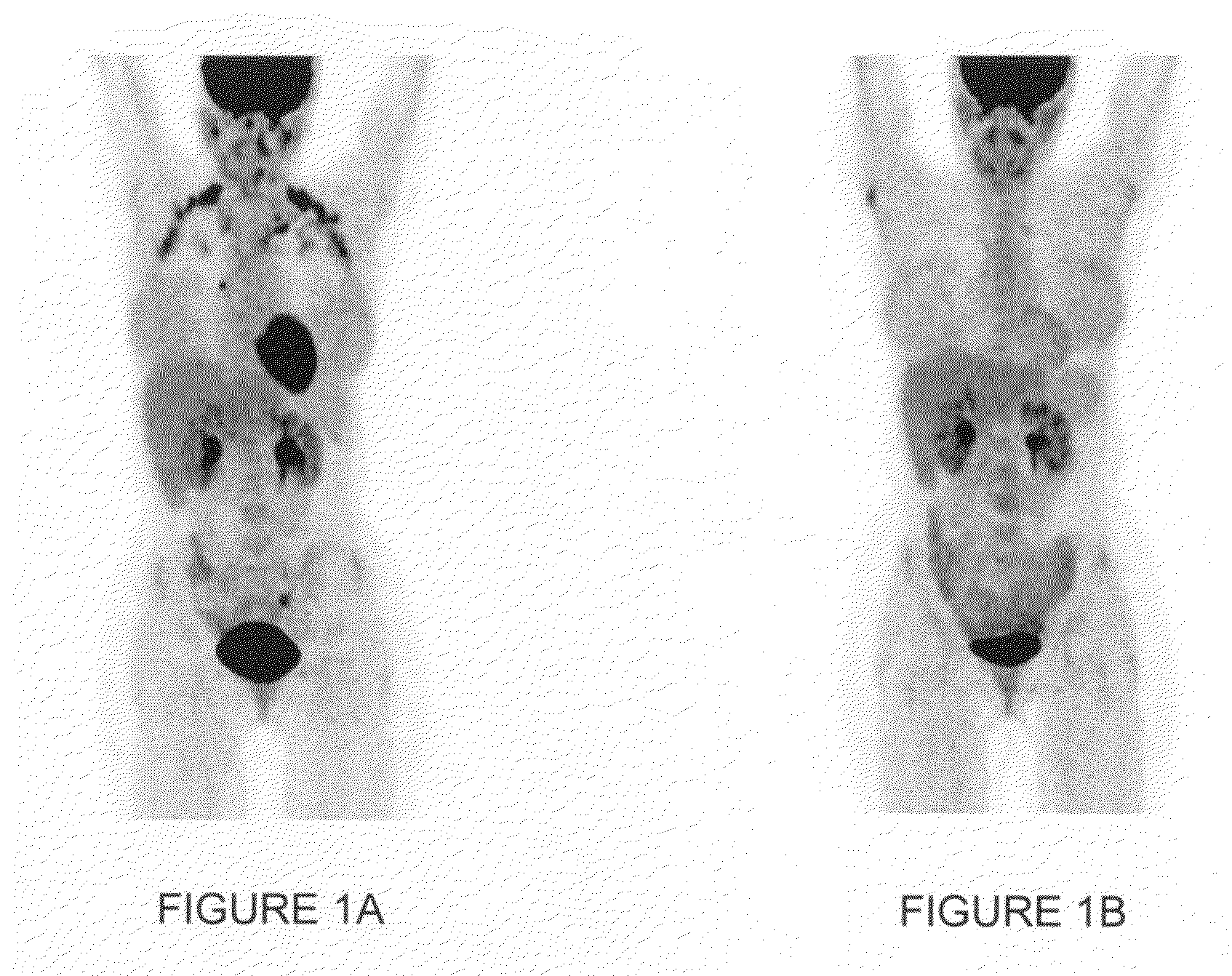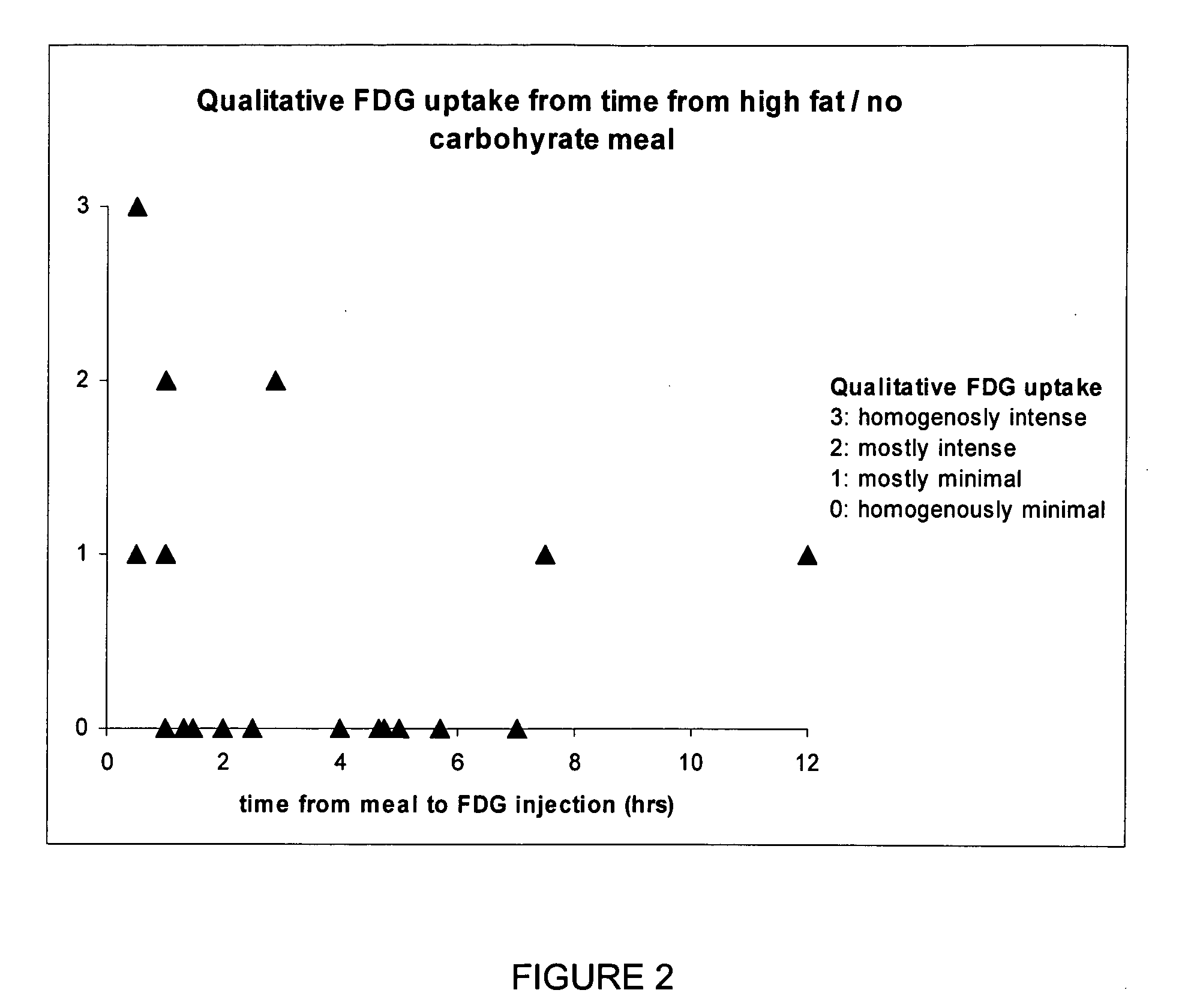Method of reducing interferences in positron emission tomography
a technology of positron emission tomography and interference, which is applied in the field of improving positron emission tomography, to achieve the effect of reducing the uptake of fdg and improving the sensitivity of scans
- Summary
- Abstract
- Description
- Claims
- Application Information
AI Technical Summary
Benefits of technology
Problems solved by technology
Method used
Image
Examples
Embodiment Construction
[0019]The present invention relates to a method and composition formulated to supply a person metabolic substrates at a specific time prior to an FDG-PET study that will minimize FDG-uptake in sites that may confound diagnostic accuracy. Reducing interfering sources of FDG-uptake in scans can improve diagnostic accuracy by minimizing false positives (mistaking physiological FDG-uptake for cancer FDG-uptake) or false negatives (physiological uptake may obscure sites of disease). Two organs in the body that have been established to cause such problems in FDG-PET scan using current patient preparation protocols are brown adipose tissue and the myocardium. Since brown adipose tissue does not occur on every scan, it is a particular problem because it is not clear if the high uptake region is a true positive or a false positive. In addition, if brown adipose tissue is present, high uptake of FDG can reduce the uptake of the cancerous or inflammatory cells that are being sought or it can p...
PUM
| Property | Measurement | Unit |
|---|---|---|
| volume | aaaaa | aaaaa |
| volume | aaaaa | aaaaa |
| volume | aaaaa | aaaaa |
Abstract
Description
Claims
Application Information
 Login to view more
Login to view more - R&D Engineer
- R&D Manager
- IP Professional
- Industry Leading Data Capabilities
- Powerful AI technology
- Patent DNA Extraction
Browse by: Latest US Patents, China's latest patents, Technical Efficacy Thesaurus, Application Domain, Technology Topic.
© 2024 PatSnap. All rights reserved.Legal|Privacy policy|Modern Slavery Act Transparency Statement|Sitemap



